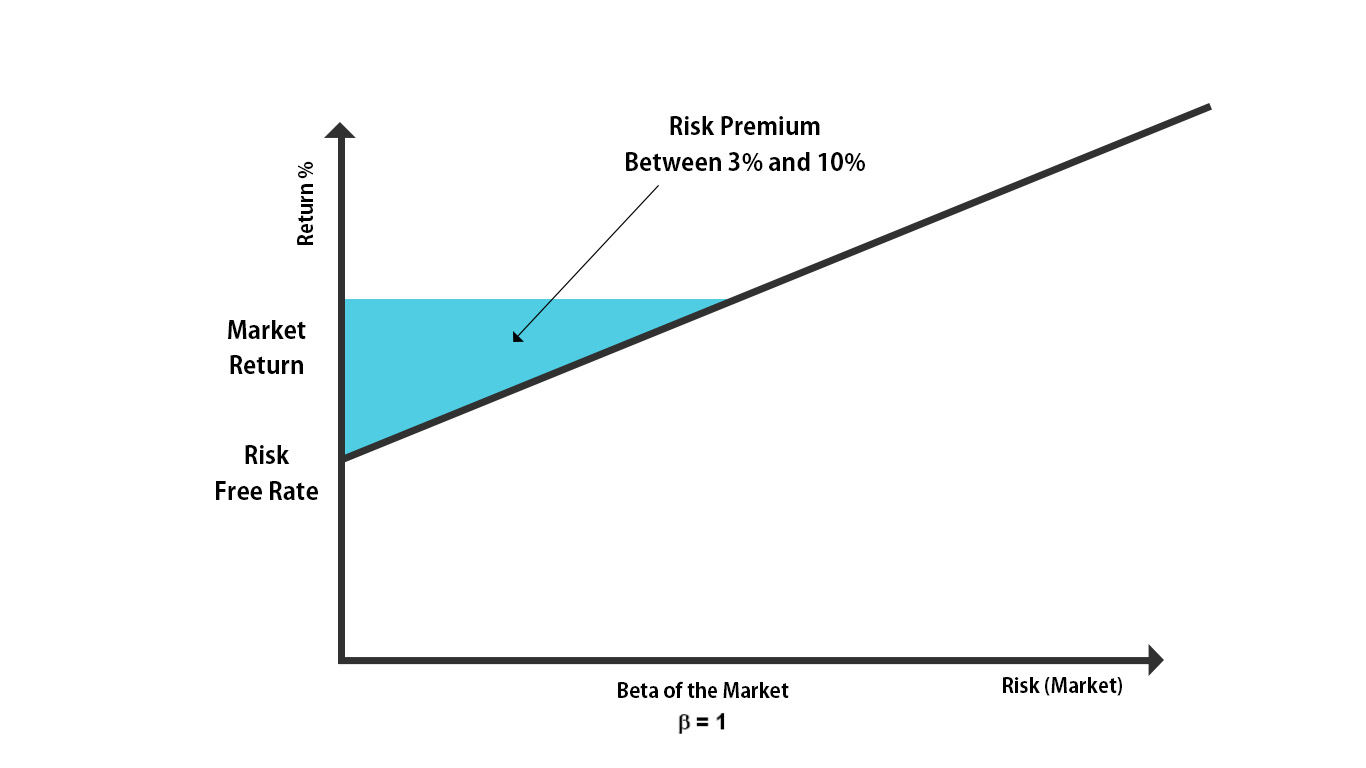

Finance
What Are The Risks Of Joint Ventures
Modified: January 15, 2024
Discover the potential risks of joint ventures in the world of finance and learn how to navigate them effectively to protect your investments.
(Many of the links in this article redirect to a specific reviewed product. Your purchase of these products through affiliate links helps to generate commission for LiveWell, at no extra cost. Learn more)
Table of Contents
Introduction
In today’s competitive business landscape, companies are often exploring various strategies to grow their operations, expand their market reach, and increase profitability. One approach that has gained significant popularity is forming joint ventures. Joint ventures involve two or more businesses coming together to collaborate on a specific project or venture, pooling resources, expertise, and assets to achieve mutual goals. While joint ventures can offer numerous benefits, it is crucial to understand and acknowledge the potential risks that come with this business arrangement.
By joining forces, companies can tap into complementary strengths, leverage shared resources, access new markets, and gain a competitive edge. Joint ventures can facilitate rapid growth, reduce risk exposure, and create opportunities for innovation and diversification. Moreover, they provide a platform for knowledge sharing and learning from each other’s experiences. However, alongside the benefits, joint ventures also bring inherent risks that need to be carefully evaluated and managed.
In this article, we will delve into the risks associated with joint ventures and explore strategies to mitigate them effectively. Understanding these risks will enable businesses to make informed decisions and maximize the potential for success in their joint ventures.
Definition of Joint Ventures
Before diving into the risks associated with joint ventures, let’s first establish a clear understanding of what a joint venture entails. A joint venture is a business arrangement in which two or more companies come together to collaborate on a specific project or venture while maintaining their separate legal identities.
Joint ventures can take various forms, including contractual agreements or the establishment of a new legal entity, such as a partnership or a limited liability company (LLC). The parties involved in a joint venture contribute resources, including capital, expertise, technology, or distribution networks, with the goal of achieving shared objectives.
While joint ventures can be formed between companies in the same industry, they can also occur between organizations operating in different sectors, aiming to leverage each other’s strengths and exploit new market opportunities. Joint ventures can be domestic or international in scope, allowing companies to expand their reach into foreign markets or access new customer segments.
It is essential to clarify that joint ventures are distinct from mergers or acquisitions, as the participating companies typically remain independent entities with separate ownership structures. In a merger or acquisition, two or more companies merge or one acquires the other, resulting in the creation of a single entity.
Joint ventures are often formed for a specific purpose or project. This could include research and development collaborations, market entry initiatives, infrastructure development, manufacturing partnerships, or joint sales and distribution efforts. Each participant in the joint venture brings their expertise and resources to the table, sharing both the risks and rewards of the venture.
Given the collaborative nature of joint ventures, it is essential to establish clear terms and agreements at the outset. This includes defining the scope of the venture, the respective responsibilities and obligations of each party, decision-making processes, profit-sharing arrangements, and dispute resolution mechanisms. A well-structured joint venture agreement can provide a solid foundation for successful collaboration and risk management.
Benefits of Joint Ventures
Joint ventures offer a range of advantages for participating companies. Let’s explore some of the key benefits:
- Access to new markets: One of the primary benefits of joint ventures is the opportunity to access new markets. By partnering with a company that has an established presence in a particular market, businesses can penetrate new territories more efficiently and overcome barriers to entry.
- Shared resources and expertise: Joint ventures allow companies to pool their resources, assets, and expertise. This shared collaboration can result in enhanced capabilities, improved efficiency, and the ability to tackle larger and more complex projects that would be challenging to undertake individually.
- Risk reduction: Engaging in joint ventures allows companies to share risks and liabilities. By spreading the financial burden and operational risks across multiple parties, individual companies can mitigate their exposure to potential losses and uncertainties.
- Cost savings: Joint ventures often lead to cost savings through economies of scale and resource optimization. By combining resources and streamlining operations, companies can achieve greater efficiency and reduce expenses, resulting in improved profitability.
- Technology and knowledge transfer: Joint ventures provide a platform for technology and knowledge transfer between participating companies. This exchange can stimulate innovation, foster learning, and fuel the development of new products, processes, or services.
- Competitive advantage: Collaboration through joint ventures can bestow a competitive advantage on the participating companies. By leveraging each other’s strengths, companies can differentiate themselves in the market, access new customer segments, or compete more effectively against industry rivals.
It is important to note that the benefits of a joint venture can vary depending on the specific objectives and circumstances of the collaboration. Therefore, careful evaluation and alignment of goals, resources, and expectations are crucial to deriving the maximum advantage from a joint venture.
Risks of Joint Ventures
While joint ventures can offer numerous benefits, it is essential to recognize and address the potential risks involved. Let’s explore some of the key risks associated with joint ventures:
- Financial Risks: Joint ventures require financial investment from participating companies. There is a risk of inadequate capital contributions or financial mismanagement, which can strain the finances of the joint venture and impact its viability. Additionally, unexpected costs, economic downturns, or fluctuations in currency exchange rates can pose financial risks.
- Operational Risks: Combining the operations of multiple companies in a joint venture can introduce operational challenges. Differences in processes, cultures, systems, or quality standards may create inefficiencies or conflicts. Inadequate coordination, lack of clarity in roles and responsibilities, or incompatible business practices can hinder the smooth functioning of the joint venture.
- Strategic Risks: Joint ventures entail strategic risks, particularly when there are differences in vision, goals, or priorities among participating companies. Misalignment in strategic direction or disagreements on key decisions can result in conflicts and impede progress. The joint venture may fail to achieve its intended objectives if the strategic vision is not aligned correctly.
- Legal Risks: Joint ventures involve the creation of legal agreements and contracts. Failure to have robust legal documentation or inadequate consideration of regulatory requirements can expose the joint venture to legal risks. Disputes over intellectual property rights, non-compliance with antitrust laws, or breach of contract can lead to costly legal battles and damage the reputation of the joint venture.
- Cultural and Communication Risks: When companies from different cultures come together in a joint venture, there can be challenges related to cultural differences and communication. Divergent work styles, communication barriers, and misunderstandings due to language or cultural norms can hinder collaboration, decision-making, and overall effectiveness.
It is important to assess and proactively address these risks to ensure the success and sustainability of the joint venture. By identifying potential risks early on and implementing appropriate risk management strategies, participating companies can mitigate the adverse impact of these challenges and increase the likelihood of achieving their desired outcomes.
Financial Risks
Financial risks are a significant concern when it comes to joint ventures. The following are some key financial risks that companies need to consider:
- Inadequate Capital: One of the primary financial risks in a joint venture is a lack of sufficient capital. Each participating company is expected to contribute an agreed-upon amount of capital to fund the joint venture’s operations. However, if one or more parties fail to provide the required capital, it can impede the joint venture’s progress and viability. It is crucial to ensure that all participants are financially capable and committed to fulfilling their capital obligations.
- Financial Mismanagement: Mismanagement of finances can lead to significant risks in a joint venture. Poor financial planning, budgeting, or excessive spending can strain the joint venture’s financial resources and put its sustainability at risk. It is vital to have a robust financial management system in place, including regular monitoring, financial reporting, and accountability to ensure the effective and efficient use of funds.
- Economic Volatility: Joint ventures can be exposed to external economic risks, such as fluctuations in interest rates, exchange rates, or market conditions. Economic downturns or unexpected shifts in the business environment can impact the joint venture’s revenue, profitability, and financial stability. Companies involved in joint ventures must assess and monitor economic factors that may affect their operations and implement strategies to mitigate these risks.
- Cost Overruns: Joint ventures often involve complex projects with a high degree of uncertainty. Cost overruns can occur due to unforeseen circumstances, changes in project scope, or inadequate cost estimation. These cost overruns can strain the joint venture’s financial resources and lead to financial difficulties. Proactive project management, diligent cost tracking and control, and regular monitoring of project progress are essential to manage and mitigate this risk effectively.
- Insufficient Revenue Generation: Joint ventures may face challenges in generating sufficient revenue to cover their expenses and achieve profitability. Factors such as market competition, ineffective marketing strategies, limited customer demand, or delays in product development can impact the joint venture’s revenue generation capabilities. It is crucial to conduct thorough market research, develop a robust marketing and sales strategy, and continuously evaluate the joint venture’s performance to identify and address any revenue generation issues.
To mitigate these financial risks, it is advisable to have a comprehensive financial risk management plan in place. This can include setting clear financial objectives and targets, conducting thorough due diligence on potential partners, establishing proper financial controls and reporting mechanisms, and regularly monitoring and reassessing the joint venture’s financial performance. By addressing financial risks proactively, companies can enhance the chances of a successful and financially sustainable joint venture.
Operational Risks
When companies engage in joint ventures, they expose themselves to a variety of operational risks. It is vital to assess and manage these risks effectively to ensure the success of the joint venture. The following are some key operational risks to consider:
- Differences in Processes and Systems: Each company participating in a joint venture may have different processes, systems, and operational structures. These differences can hinder seamless collaboration and lead to inefficiencies. It is essential to identify and address the gaps and inconsistencies between the participating companies’ operations to ensure smooth integration and effective coordination within the joint venture.
- Lack of Clarity in Roles and Responsibilities: Joint ventures require clear delineation of roles and responsibilities to avoid confusion or conflicts. Without proper clarity, overlapping responsibilities or gaps in accountability may arise. This can result in delays, errors, or even operational breakdowns. Establishing well-defined roles and responsibilities for each participating company, as well as effective communication channels, is crucial to mitigate this risk.
- Cultural Differences: Joint ventures often involve companies from different regions or countries with diverse cultural backgrounds. These cultural differences can impact communication, decision-making, and day-to-day operations. Language barriers, variations in work styles, and diverging business practices can create misunderstandings and conflicts. Building cross-cultural understanding, promoting open communication, and fostering a collaborative work environment can help overcome these challenges.
- Insufficient Integration: In a joint venture, successful integration of processes, information systems, and human resources is essential. Inadequate integration can result in siloed operations and data, leading to inefficiencies and coordination difficulties. It is necessary to invest in integration planning, including harmonizing systems, aligning processes, and facilitating effective knowledge sharing and collaboration among the participating companies.
- Lack of Operational Flexibility: Joint ventures need to adapt to dynamic market conditions and changing customer demands. However, if the joint venture’s operations are rigid or lack flexibility, it may struggle to respond to these changes effectively. Establishing agile operational frameworks, leveraging technology, and fostering a culture of innovation and continuous improvement can mitigate the risk of operational inflexibility.
Effective risk management strategies for operational risks in joint ventures include conducting comprehensive operational assessments before forming the joint venture, establishing clear and documented operational processes and protocols, promoting transparent and open communication among all stakeholders, and regularly monitoring operational performance. By identifying and addressing operational risks proactively, companies can enhance the efficiency and effectiveness of the joint venture and increase its chances of success.
Strategic Risks
Joint ventures involve strategic risks that can potentially impact the success and sustainability of the collaboration. It is crucial for participating companies to address and mitigate these risks effectively. The following are some key strategic risks to consider:
- Misalignment of Goals and Objectives: Each participating company in a joint venture may have its own set of goals and objectives. If these goals are misaligned or conflicting, it can create challenges in decision-making, resource allocation, and overall direction of the joint venture. It is crucial to establish a shared vision and common objectives that are mutually agreed upon by all participating companies to mitigate this risk.
- Different Strategic Priorities: Companies in a joint venture may have differing strategic priorities, such as market expansion, product development, or cost reduction. These divergent priorities can lead to conflicts and disagreements on key strategic decisions. Clear communication, open dialogue, and a collaborative decision-making process are essential to address this risk and ensure that strategic priorities are harmonized and aligned.
- Competitive Dynamics: Companies entering into a joint venture may be competitors in some areas of their business. Coordinating and managing this competitive dynamic can be challenging and may require careful consideration. It is crucial to establish clear boundaries and guidelines regarding competition within the joint venture to avoid conflicts of interest or potential antitrust issues.
- Incompatible Cultures and Leadership Styles: When companies from different organizational cultures and leadership styles come together in a joint venture, it can create strategic challenges. Differing decision-making processes, communication styles, or approaches to risk can lead to conflicts and hinder strategic alignment. It is important to bridge these cultural gaps by fostering a culture of mutual respect, understanding, and collaboration.
- Market Changes and Disruptions: External market changes, technological advancements, or industry disruptions can impact the strategic direction of a joint venture. Failure to anticipate or adapt to these changes can leave the joint venture vulnerable and hinder its ability to stay competitive. Regular monitoring of market trends, conducting strategic reviews, and developing contingency plans are essential to mitigate this risk.
To address strategic risks effectively, participating companies should conduct a thorough strategic analysis before entering into the joint venture. This includes assessing the compatibility of goals and strategic priorities, evaluating potential conflicts and competitive dynamics, and establishing a shared strategic vision. Ongoing communication, alignment, and periodic strategic evaluations are important to ensure that the joint venture remains on track and adaptable to changing market conditions and priorities.
Legal Risks
Joint ventures involve legal risks that companies must carefully evaluate and manage to ensure compliance with applicable laws and regulations. The following are some key legal risks to consider:
- Inadequate Legal Documentation: The lack of comprehensive and well-drafted legal agreements and contracts can expose the joint venture to various risks. It is essential to have clearly defined rights, obligations, and dispute resolution mechanisms documented in legally binding agreements. These agreements should cover important aspects such as capital contributions, profit sharing, decision-making processes, intellectual property ownership, exit strategies, and non-compete clauses to protect the interests of all participating companies.
- Non-Compliance with Antitrust Laws: Joint ventures need to comply with antitrust laws and regulations to prevent anti-competitive practices. Collaborating companies must ensure that their joint venture activities do not result in market domination, price fixing, or unfair competition. It is essential to consult legal experts and conduct thorough antitrust assessments to ensure compliance with relevant laws and regulations.
- Intellectual Property Disputes: Joint ventures often involve the sharing of intellectual property rights, such as patents, trademarks, or trade secrets. Failure to establish and protect these rights adequately can lead to disputes and legal challenges. It is important to clearly define ownership, usage rights, and protection measures for intellectual property in the joint venture agreements. Maintaining confidentiality, implementing robust security measures, and having proper documentation in place can help mitigate intellectual property-related risks.
- Breach of Contract: Joint ventures rely heavily on contractual agreements to govern the rights and responsibilities of participating companies. Any breach of these contracts can result in legal disputes, financial losses, and damage to the joint venture’s reputation. It is essential to ensure that all parties involved fully understand and comply with their contractual obligations. Regular contract monitoring, effective communication, and timely dispute resolution can help minimize the risk of contract breaches.
- Regulatory Compliance: Joint ventures must navigate complex regulatory environments and ensure compliance with applicable laws, rules, and regulations. This includes industry-specific regulations, tax compliance, employment laws, environmental regulations, and data privacy requirements, among others. It is crucial to conduct thorough due diligence, engage legal advisors, and establish robust compliance frameworks to mitigate legal risks associated with regulatory compliance.
To manage legal risks effectively, participating companies should engage legal experts experienced in joint ventures to provide guidance and support throughout the process. It is essential to review and update legal documentation regularly, establish clear guidelines for compliance with laws and regulations, and proactively address any legal issues that may arise during the course of the joint venture.
Cultural and Communication Risks
When companies engage in joint ventures, they often encounter cultural and communication risks that can impact collaboration and overall success. It is crucial to address these risks effectively to foster a harmonious and productive working environment. The following are some key cultural and communication risks to consider:
- Different Communication Styles: Participating companies in a joint venture may have different communication styles, which can lead to misunderstandings and hinder effective collaboration. Differences in directness, indirectness, use of nonverbal cues, or communication norms can create barriers. It is important to establish open and transparent communication channels, promote active listening, and bridge communication gaps through regular dialogue and clarification.
- Language Barriers: Joint ventures often involve companies from different linguistic backgrounds. Language barriers can hinder effective communication and lead to misinterpretation or miscommunication of important information. Companies should consider employing translators or interpreters, providing language training if necessary, and encouraging the use of common languages or clear translation mechanisms to overcome language barriers.
- Differences in Work Cultures: Companies from different regions or countries may have distinct work cultures and practices. These differences can include approaches to hierarchy, decision-making processes, work-life balance, or attitudes towards risk-taking. Divergent work cultures can cause misunderstandings or conflicts. It is crucial to promote cultural understanding, educate employees about different work cultures, and create a collaborative work environment that values diversity and inclusivity.
- Time Zone Differences: Joint ventures that operate across different time zones can face challenges in coordinating activities and ensuring timely communication. Scheduling conflicts, delays in response times, or inability to conduct real-time meetings can impede collaboration. It is important to establish clear protocols for communication, consider alternative meeting times, and leverage technology solutions to bridge time zone differences and maintain effective communication.
- Conflict Resolution: Cultural differences and communication barriers can exacerbate conflicts within a joint venture. If conflicts are not addressed promptly and effectively, they can escalate and negatively impact the joint venture’s operations and relationships. Developing conflict resolution mechanisms, providing employees with conflict management skills, and encouraging open dialogue and respectful communication are crucial to managing and resolving conflicts in a culturally diverse joint venture.
To overcome cultural and communication risks, joint venture partners should invest in cultural training and awareness programs to enhance understanding and appreciation of different cultures. Establishing effective communication channels, fostering a culture of openness and inclusivity, and promoting regular communication and collaboration can help to bridge cultural gaps and facilitate successful joint venture operations.
Risk Mitigation Strategies
To effectively mitigate the risks associated with joint ventures, participating companies should implement the following strategies:
- Thorough Due Diligence: Before entering into a joint venture, conducting comprehensive due diligence is essential. This includes assessing the financial health, operational capabilities, and track record of potential partners. Thorough due diligence helps identify any red flags or potential risks that could impact the success of the joint venture.
- Clear and Comprehensive Contracts: A crucial risk mitigation strategy is the establishment of clear and comprehensive joint venture contracts. These contracts should outline the rights, responsibilities, and obligations of each participating company, as well as provisions for dispute resolution and risk sharing. Engaging legal experts to draft and review these contracts ensures they cover all necessary legal and business considerations.
- Effective Communication and Collaboration: Open and effective communication is vital in mitigating various risks in joint ventures. Establishing regular communication channels, promoting transparency, and fostering a collaborative work environment facilitate the exchange of information, align expectations, and address any emerging challenges in a timely manner.
- Risk Sharing and Resource Allocation: Sharing risks and resources equitably among participating companies is crucial in a joint venture. Establishing clear mechanisms for risk sharing and resource allocation helps to reduce the burden on individual companies and ensures a fair distribution of responsibilities and benefits. Regular evaluation and adjustment of these mechanisms can help maintain balance and mitigate potential conflicts.
- Continuous Monitoring and Evaluation: Regular monitoring and evaluation of the joint venture’s performance are essential to identify potential risks and address them proactively. Key performance indicators (KPIs) should be established to track the joint venture’s progress and financial performance. Ongoing evaluation allows for timely intervention and adjustment of strategies, ensuring that the joint venture remains on track towards achieving its objectives.
- Risk Assessment and Contingency Planning: Conducting thorough risk assessments helps identify potential risks and their likelihood of occurrence. This enables companies to develop contingency plans to mitigate the impact of those risks. Proactive risk management includes identifying alternative courses of action, implementing risk mitigation measures, and regularly reviewing and updating contingency plans as the joint venture evolves.
- Building a Complementary and Trusting Partnership: Developing a strong and complementary partnership with trust and mutual respect lays the foundation for effective risk management. Building solid relationships among participating companies fosters open communication, facilitates problem-solving, and encourages collaboration in addressing risks and challenges that may arise during the joint venture.
By implementing these risk mitigation strategies, participating companies can proactively manage and minimize potential risks in joint ventures. Careful planning, effective communication, and continuous monitoring form the pillars of successful risk management in joint ventures, ensuring the smooth functioning and long-term success of the collaboration.
Conclusion
Joint ventures can be a powerful strategy for companies to achieve growth, expand into new markets, and leverage shared resources and expertise. However, it is essential to recognize that joint ventures also come with inherent risks that need to be understood and effectively managed. Financial risks, operational challenges, strategic misalignment, legal complications, and cultural and communication barriers are all potential risks that can impact the success of a joint venture.
In this article, we have explored the various risks associated with joint ventures and discussed strategies to mitigate those risks. Thorough due diligence, clear and comprehensive contracts, effective communication and collaboration, risk sharing and resource allocation, continuous monitoring and evaluation, risk assessment and contingency planning, and building strong partnerships are all vital components of successful risk management in joint ventures.
By addressing these risks proactively and implementing appropriate risk mitigation strategies, participating companies can enhance the chances of a successful joint venture. It is crucial to establish a solid foundation through well-defined goals, shared vision, and strong governance structures. Ongoing communication, adaptability, and openness to address challenges as they arise will contribute to the long-term success of the joint venture.
In conclusion, while joint ventures offer tremendous potential for growth and innovation, it is imperative to approach them with a clear understanding of the risks involved and a commitment to actively manage and mitigate those risks. With careful planning, mutual cooperation, and effective risk management, companies can unlock the benefits of joint ventures, capitalize on new opportunities, and drive sustained success in an ever-evolving business landscape.














